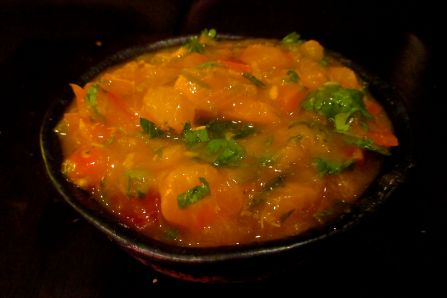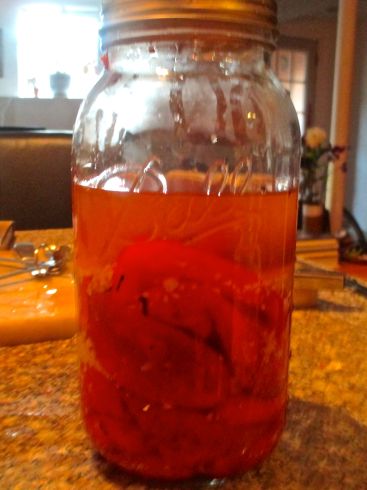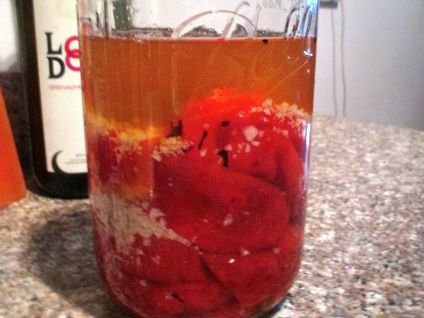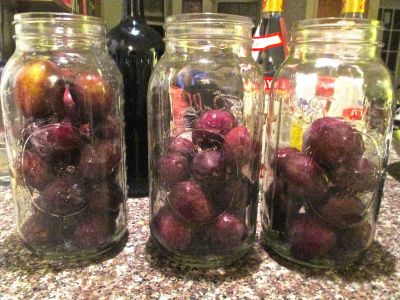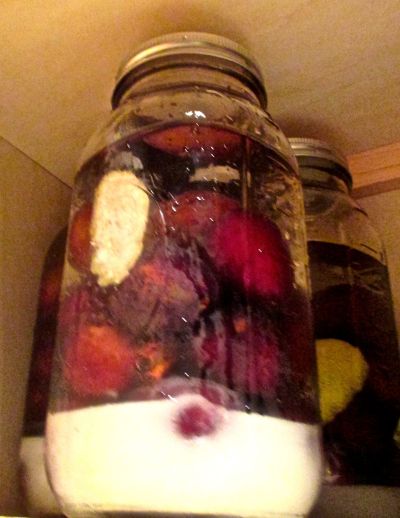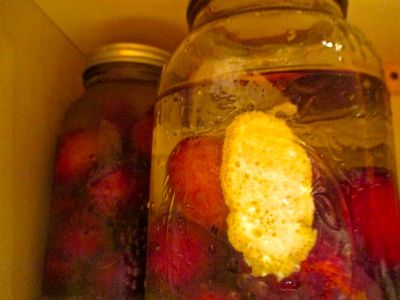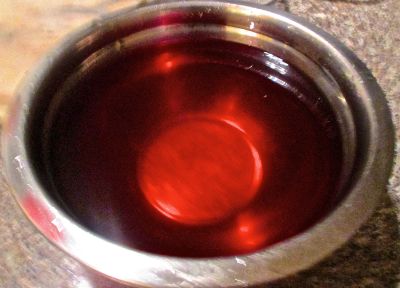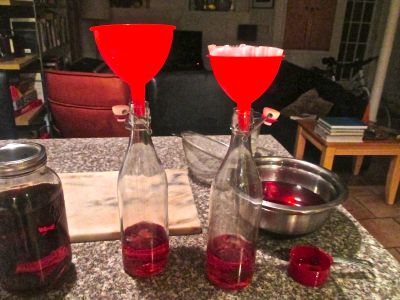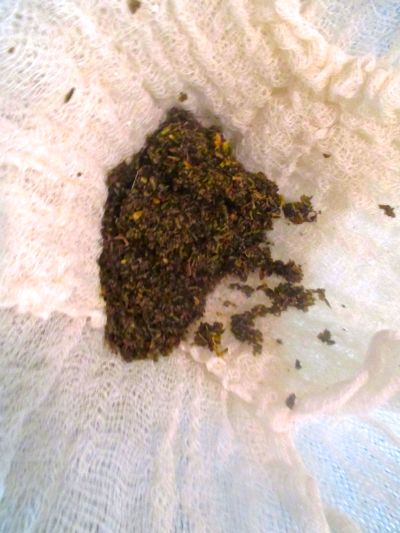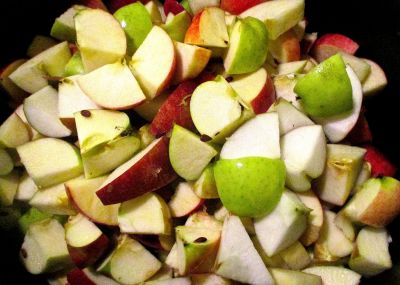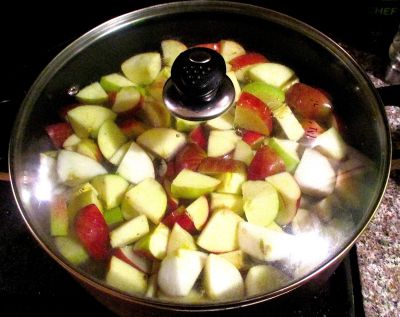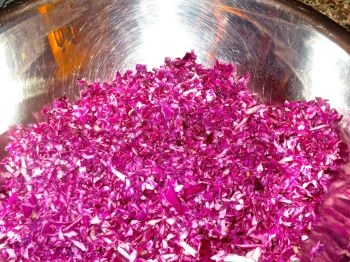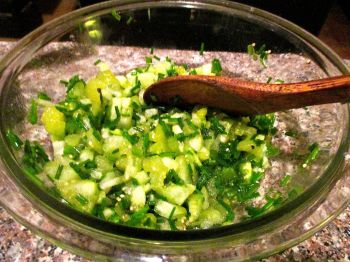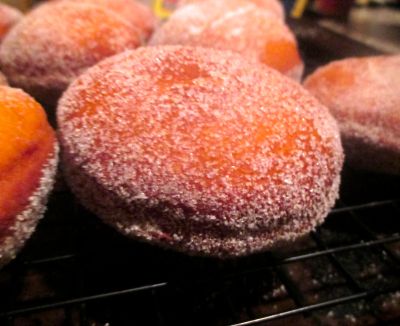
I have never been that big a fan of Thanksgiving: lots of mediocre food, mediocre relatives, and hours and hours of boredom sitting around waiting to eat a not that amazing meal. Light glaring through the windows during the meal because you’re eating in the middle of the afternoon; then many more hours of boredom plus indigestion as you sit around some more waiting for the moment when you can make your exit. So maybe some people’s Thanksgivings aren’t like this. I’m sure your family is full of gourmet chefs, has fun Thanksgiving traditions and games involving jumping into piles of leaves, and playing cutthroat games of UNO. Maybe you even like football. But every year it’s my least looked forward to holiday. It’s the one to be gotten over with, not enjoyed.
But then it fell on Hanukkah. Which is a holiday I really love. Latkes and applesauce, presents and candles. There are songs and prayers that I actually know. It’s a holiday that, unlike Thanksgiving, my family actually knows how to do. So hopefully tonight Hanukkah will cancel out the Thanksgiving doldrums and we might all have a nice time.
My mother this year asked me to make dessert, and I went kind of crazy making the perfect Thanksgivingkkah sweets.
I’ve always thought that a big dinner should end with light, refreshing desserts, not heavy ones. So I skipped the pies and went for frozen sweets instead. I made one ice cream or sorbet for each of the traditional Thanksgiving dessert flavors: pumpkin ginger ice cream, Mexican chocolate pecan ice cream, and persimmon sorbet. And of course because I can’t help myself, and because it’s Thanksgivingkkah, I also made special Thanksgiving sufganiyot, or Hanukkah doughnuts. They’re apple cider flavored and caramel filled.
For this recipe you’ll need a pastry bag, a rolling pin, parchment paper, and a candy thermometer.
Thanksgivingkkah Sufganiyot
(Adapted from Chow.com)
For Doughnuts:
2 ½ cups all purpose flour
1 teaspoon cinnamon
½ teaspoon salt
Pinch grated nutmeg
1 tablespoon vegetable oil
1 (¼ ounce) packed active dry yeast
¼ plus 1 teaspoon sugar
¾ cup apple cider
2 egg yolks
1 tablespoon apple sauce
1 teaspoon vanilla extract
1 tablespoon unsalted butter, room temperature, cut into 4 pieces.
For Caramel Filling:
1 cups sugar
¼ cup water
¼ teaspoon plus 1/8 teaspoon salt
1/3 cups heavy cream
1 teaspoon vanilla
For frying doughnuts:
2 quarts vegetable oil
½ cup sugar
To make the doughnuts:
1.) Coat a large bowl with vegetable oil
2.) Combine flour, cinnamon salt, and nutmeg in a large bowl and whisk.
3.) Place yeast and 1 teaspoon sugar in a medium bowl.
4.) Heat ½ cup apple cider until warm (about 110 degrees) and add to yeast and sugar, stirring to combine. Let mixture sit for 5 minutes.
5.) Add ¼ cup sugar, ¼ cup apple cider, yolks, applesauce, and vanilla to yeast mixture and whisk together.
6.) Add yeast mixture to flour mixture and stir until dough comes together into a ball.
7.) Transfer dough to floured surface. Scatter butter pieces in dough and knead dough until butter is incorporated and dough is smooth (about 7 minutes)
8.) Form dough into a ball, place in oiled bowl and roll it around until coated in oil. Cover and let sit 2 hours until doubled in size.
For Caramel:
1.) Before the dough has risen, place sugar, water, and salt in a saucepan and boil over medium heat, stirring until sugar is dissolved.
2.) Boil, swirling (not stirring the pan until it turns dark amber (about 10 minutes)
3.) Remove from heat and stir in cream and vanilla. The mixture will boil violently. Transfer to a heatproof bowl and allow the caramel to cool completely.
Rolling out and frying doughnuts:
1.) Line a baking sheet with parchment paper.
2.) Punch down dough and roll out on a floured surface until ¼ inch thigh.
3.) Using a 2-inch cookie cutter (or a wide rimmed wine glass) cut out dough rounds and place on parchment paper. Gather scraps and continue to roll up until all the dough is used.
4.) Cover doughnuts with plastic wrap and allow to rise for half an hour more.
5.) Heat oil in a heavy-bottomed pan over medium heat until temperature reaches 365 degrees on your candy thermometer.
6.) While oil is heating up, fill a pastry bag with a small round tip with the caramel sauce. Put sugar in a small bowl and set a cooling rack over a cookie sheet.
7.) When oil is hot enough add 4 doughnuts and fry until golden brown, about one minute per side. The doughnuts should puff up in frying.
8.) When first batch is done, set on a rack and put in the next batch. While next batch is frying using tongs, take the finished doughnuts and roll around in the bowl of sugar. Repeat process until all doughnuts are finished.
9.) Once all the frying is completed and the doughnuts are cool enough to handle, cut a small hole in each of them with a paring knife. Then taking the pastry bag in two hands (one to hold it closed, the other to pipe the caramel) fill each doughnut with about a tablespoon’s worth of filling. Doughnuts are ideally consumed immediately, but can be kept overnight in an airtight container and reheated in a hot oven the following day.



